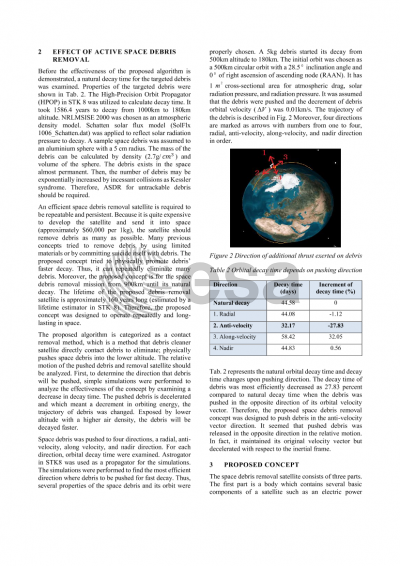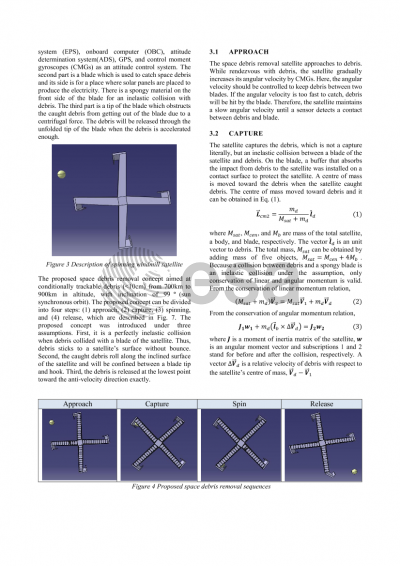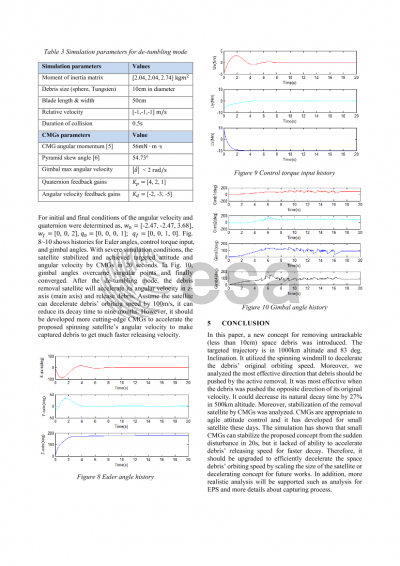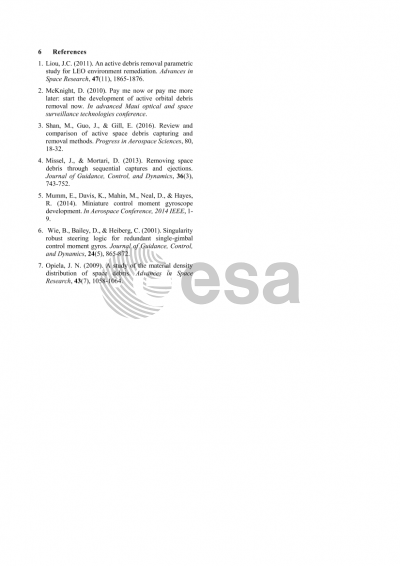Document details

Abstract
The number of the space debris has been exponentially increasing. There were several serious collisions between space debris and space vehicles. The collisions may cause much inconvenience and economic damages to mankind. All who takes advantage of benefits from space development should be interested in solving these problems. Several researches have already studied about space debris active removal. However, previous researches focused on removing trackable debris. Although trackable debris is relatively big, not trackable debris can be more dangerous to satellite. Therefore, this paper proposes an active removal concept for not trackable space debris.
The main idea of the proposed concept is to accelerate decay of the debris by pushing them to the atmosphere. The pushed debris automatically lose their kinetic energy by air drag, then they decay faster. First, a simulation was performed to determine the most effective direction (radial or direction of fly or side etc.) to push out the debris. As a result of the simulation, directly opposite direction of fly was chosen.
The proposed concept consists of four steps: (1) Detection and approach phase, (2) Capture and spinning phase, (3) Release and (4) Stabilization phase. While debris removal satellite changes its orbit, it tries to detect space debris. When the space debris is detected, the satellite approaches to the debris (rendezvous) by relative motion dynamics. To push out the debris, the satellite starts to spin while approaching. The space debris removal satellite has four blades on its four sides, captured space debris is pushed back by the blades. After releasing, the satellite stabilizes and changes orbit to find other debris.
Simulation results shows that momentum is applied in the direction opposite to the flight path to shorten the time to enter the Earth atmosphere to remove the most efficient space debris. As a result of calculations, it took 3.01 days debris to be naturally decayed from 300 km altitude. When the debris was pushed by the debris removal satellite, It proved its effectiveness by 30% accelerated decay time to 2.1 days. This research proposes a new concept of untrackable space debris removal procedures and verifies its performance by MATLAB simulations.
Preview







